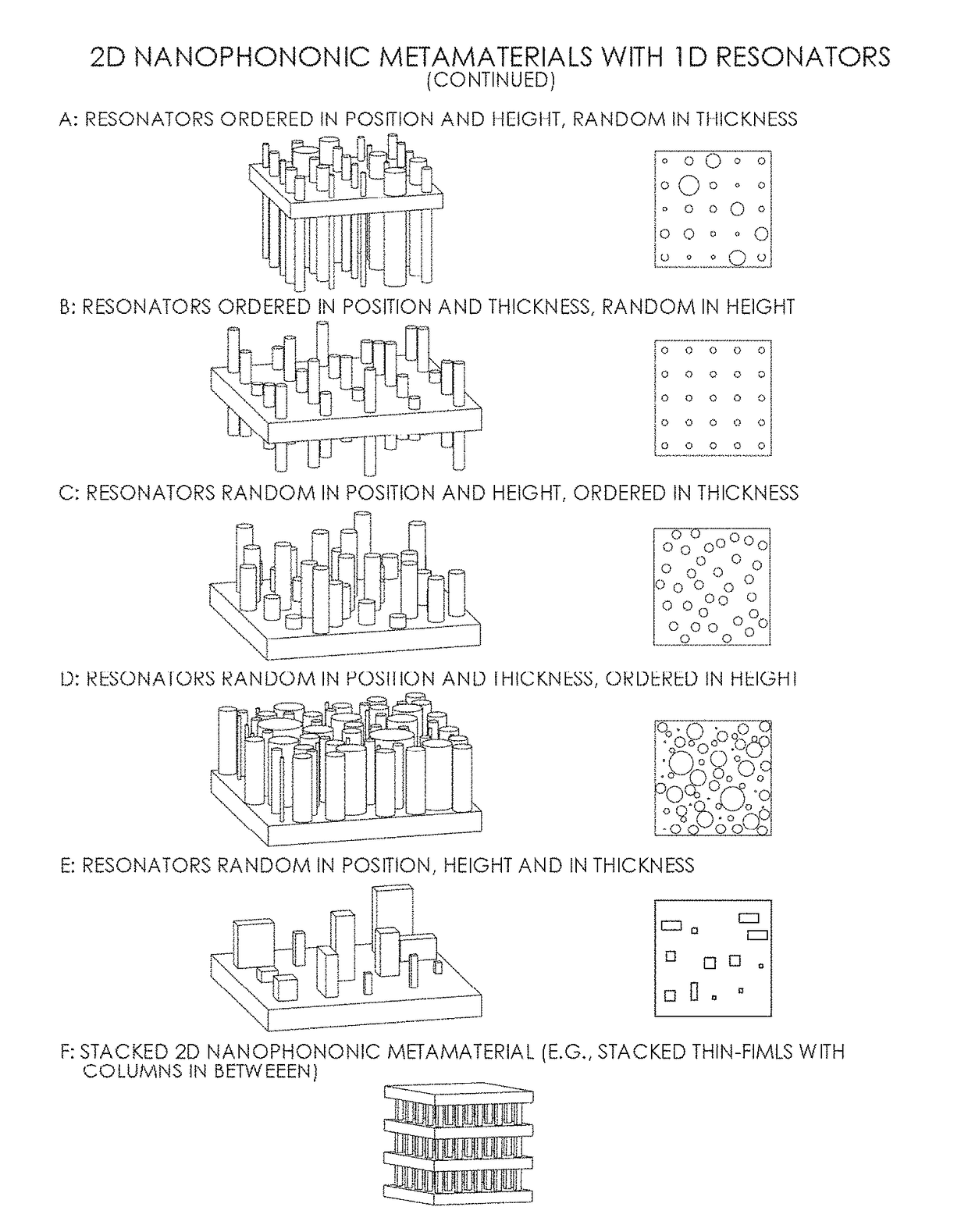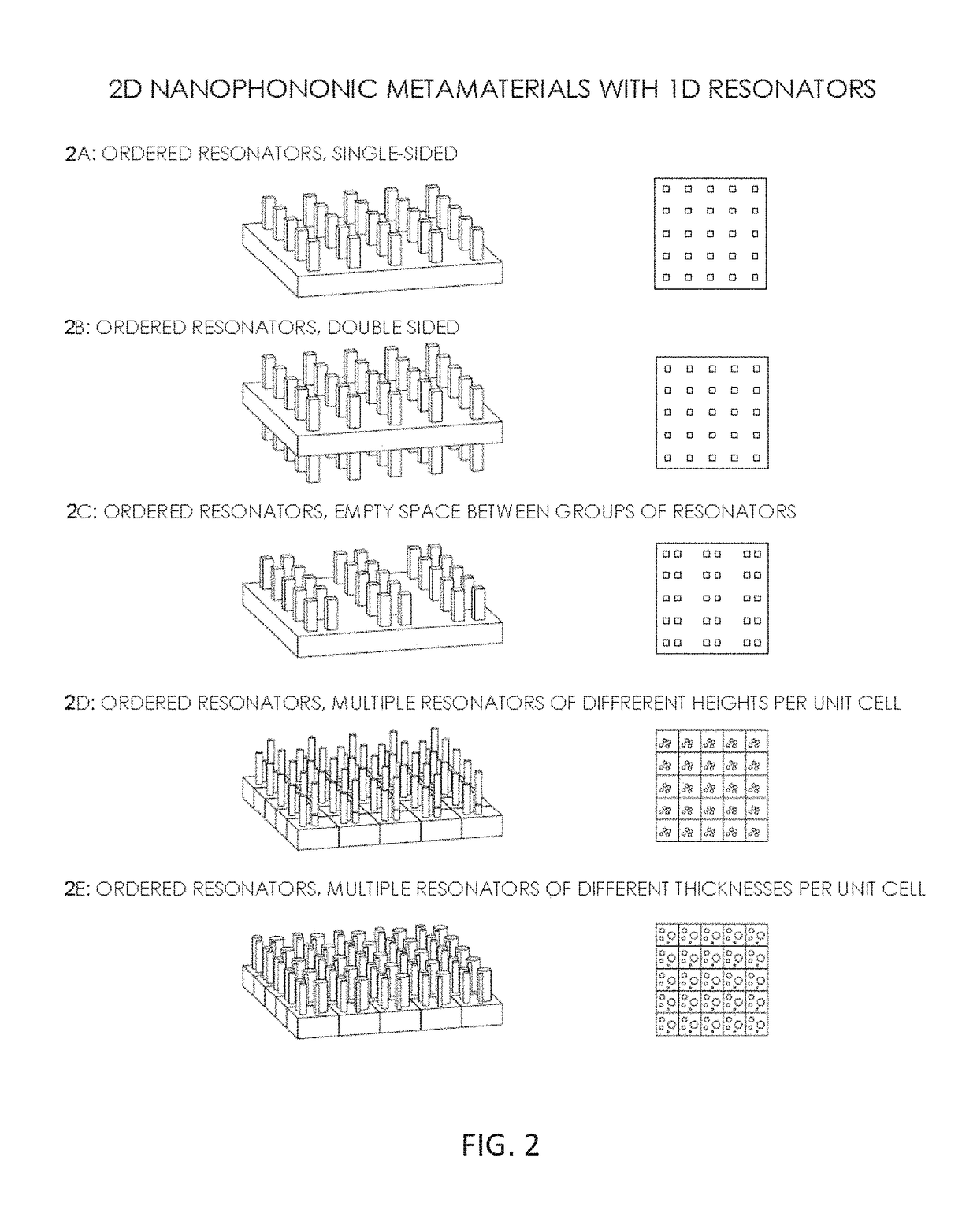Phononic metamaterials adapted for reduced thermal transport
a phonon and metamaterial technology, applied in the field of phonon metamaterials adapted for reduced thermal transport, can solve the problems of weakening the current it created, limiting the use of thermoelectric materials to niche or small-scale applications, and reducing the group velocities of phonons, so as to reduce the group velocities, enhance the resonance, and reduce the force
- Summary
- Abstract
- Description
- Claims
- Application Information
AI Technical Summary
Benefits of technology
Problems solved by technology
Method used
Image
Examples
Embodiment Construction
[0062]Phononic metamaterials are provided herein. For example, phononic metamaterials may be provided at the nanoscale (also described as a nanophononic metamaterial (NPM)), at the microscale (also described as a microphononic metamaterial (Micro PM), at the milliscale (also described as a milliphononic metamaterial (Milli PM) as well as at other larger or smaller scales. In some implementations, a phononic metamaterial can be used to significantly reduce thermal conductivity in a structured semiconducting material (e.g., a nano-structured, micro-structured, milli-structured or centi-structured semiconducting material) and, in some implementations, do so without affecting (or at least without significantly affecting) other important factors for thermoelectric energy conversion, such as the electrical conductivity and Seebeck coefficient.
[0063]Heat flow through an at least partially crystalline base material is carried by atomic waves (phonons) with a wide range of frequencies. A pho...
PUM
| Property | Measurement | Unit |
|---|---|---|
| thickness | aaaaa | aaaaa |
| thickness | aaaaa | aaaaa |
| thickness | aaaaa | aaaaa |
Abstract
Description
Claims
Application Information
 Login to View More
Login to View More - R&D
- Intellectual Property
- Life Sciences
- Materials
- Tech Scout
- Unparalleled Data Quality
- Higher Quality Content
- 60% Fewer Hallucinations
Browse by: Latest US Patents, China's latest patents, Technical Efficacy Thesaurus, Application Domain, Technology Topic, Popular Technical Reports.
© 2025 PatSnap. All rights reserved.Legal|Privacy policy|Modern Slavery Act Transparency Statement|Sitemap|About US| Contact US: help@patsnap.com



